 Jacob Maris, Two Girls, Daughters of the Artist, Blowing Bubbles, 1880, watercolour and black chalk
Jacob Maris, Two Girls, Daughters of the Artist, Blowing Bubbles, 1880, watercolour and black chalk
I recently discovered some watercolours by a Dutch painter Jacob Maris which instantly captivated me, and looking at Moris’s more representative paintings just further assured me in the opinion that these simple and delicate watercolours are the most beautiful works that Maris ever painted. Maris (1837-1899) is mainly remembered as a landscape painter, thus continuing the centuries long tradition of gloomy and atmospheric Dutch landscapes and seascapes with dark dramatic clouds looming over seaside villages and solitary windmills, reminiscent of the seventeenth century landscapes by Dutch masters such as Jacob van Ruisdael and Jan van Goyen. Along with his two younger brothers Matthijs and Willem, he belonged to the Hague School of painters which was inspired by the Realist tendencies of French art and the Barbizon School. Maris studied in Hague and Antwerp where he was a roommate with Lawrence Alma-Tadema for a brief time, lived in many different places in Europe and died in Karlovy Vary which is in modern Czechia, and of course he had a taste of Paris as well and lived there from 1866 to 1871, and married Catharina Hendrika Horn in 1867.
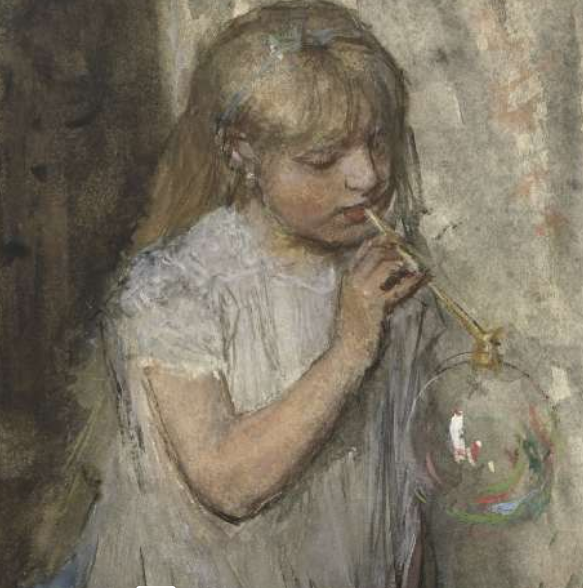
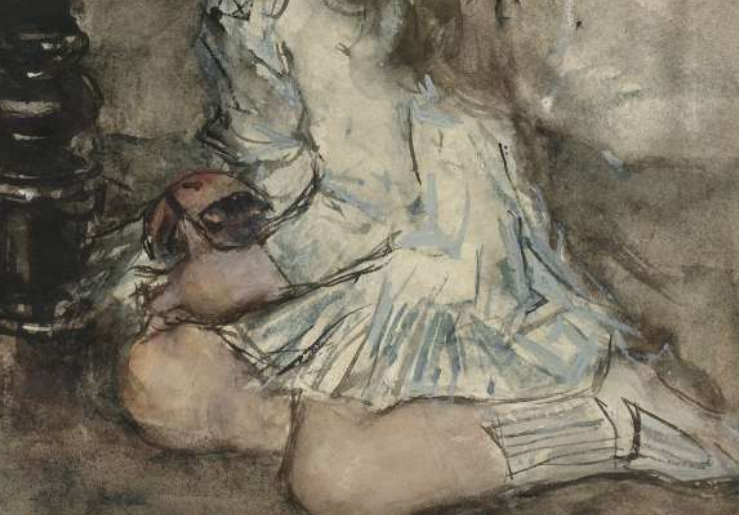
But these watercolours here are something completely different; firstly, a different medium. Watercolours make every motif, no matter how mundane, appear poetic, gentle and tinged with a bit of sweet melancholy. Being so watery and changeable, watercolours remind of me tears, of the moon’s unpredictability and quickly changing emotions. These playful and intimate genre scenes painted on small scale canvases are a stark contrast to Maris’s darker and larger scaled landscapes. In the painting “Two Girls Blowing Bubbles” we see Maris’s two daughters, probably Tine and Henriette, enjoying themselves. The older girl is blowing a bubble while the younger one is sitting and gazing in awe at her sister’s triumphant large bubble. Look how the bubble was painted, almost transparent, with just a few touches of pink and blue. A spontaneous moment from Maris’s home life captured in a scale of white and grey tones, perhaps similar to Whistler’s Harmonies and Symphonies. A colourful ceramic bowl in the centre of the painting is a little relief from all the greyness, and yet, even with these sombre colours Maris achieved liveliness and spontaneity, it doesn’t look dull and serious at all. But these were painting made for sale, despite their seemingly more intimate character. They weren’t painted just to portray his cozy family life. The thing that connects these genre scenes with the landscapes that he painted is that despite the difference in motifs, his aim was the same; to capture the atmosphere, the mood, which interest him more than the portrait itself. Perhaps that is why Maris often painted his figures seen from the back or from the profile, because he wasn’t that interested in the individual characteristics of the face. That also gives his shadowy figures of girls in white a mysterious vibe.
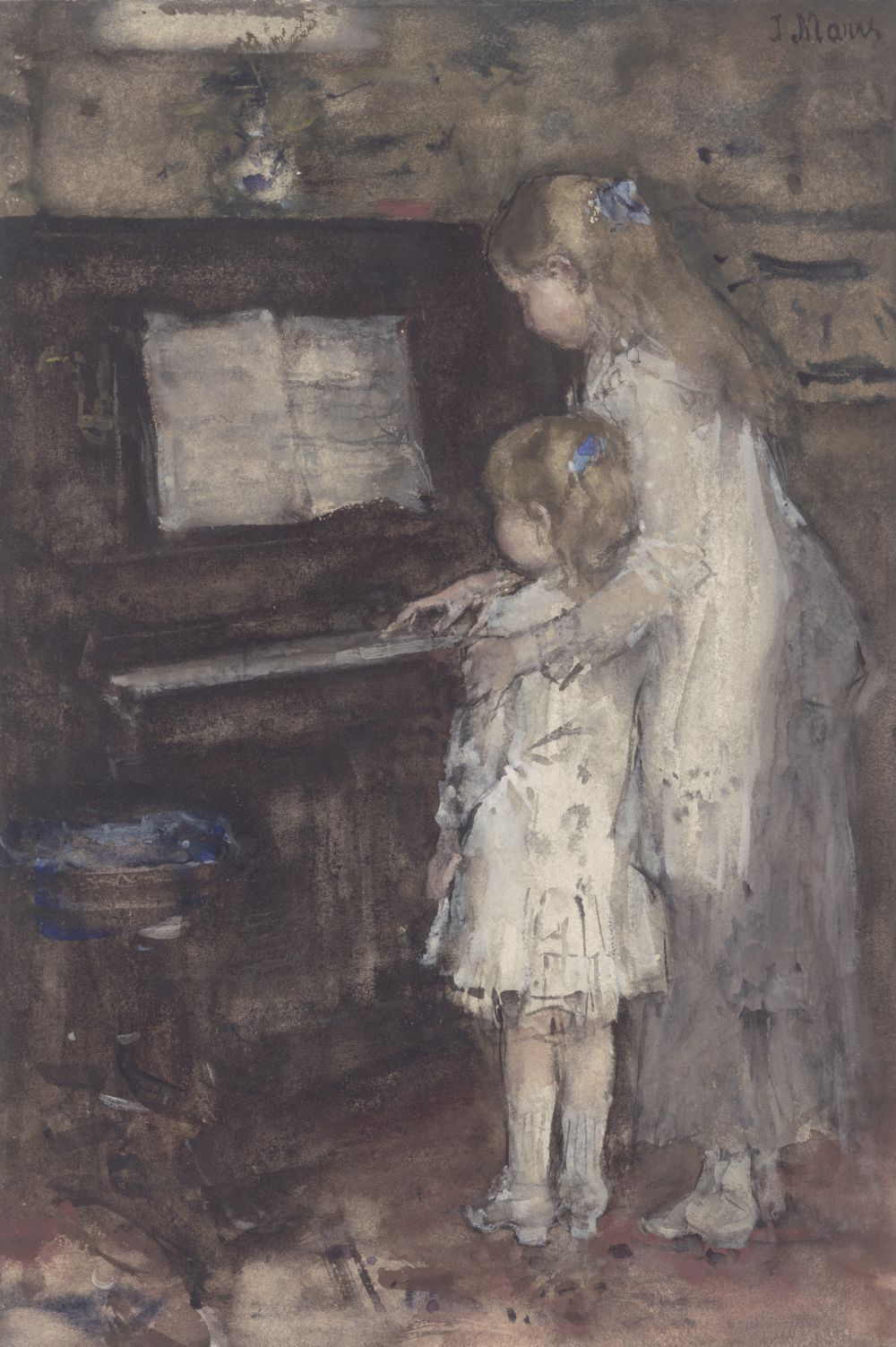
Jacob Maris, Two Girls, Daughters of the Artist at the Piano, 1880, watercolour
“Daughters of the Artist at the Piano” also shows an intimate moment from his family life. Again, his two daughters are shown enjoying a proper past time for a respectable young lady; piano playing. Well, we can assume they are playing it because in this watercolour they are just standing next to it. I love the contrast between the left side of the painting which is darker and the right side which is way lighter because the two girls are standing here, with their backs turned back to us they are showing off their soft feathery hair and matching blue ribbons. The older girl is touching a few piano keys while the younger one watches. Can you not hear music in the air? Do you not feel as if you are standing right behind them and observing them. For those of you who are not convinced in the superior beauty of watercolours, let me show you a similar motif by Maris but painted in the traditional oil on canvas technique. How much more delicate the watercolour looks? Like a poem on paper.
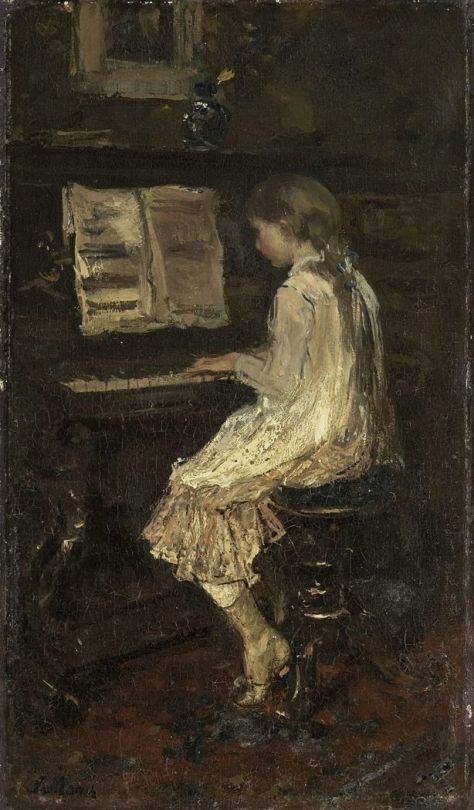
Jacob Maris, Girl at the Piano, 1879, oil on canvas
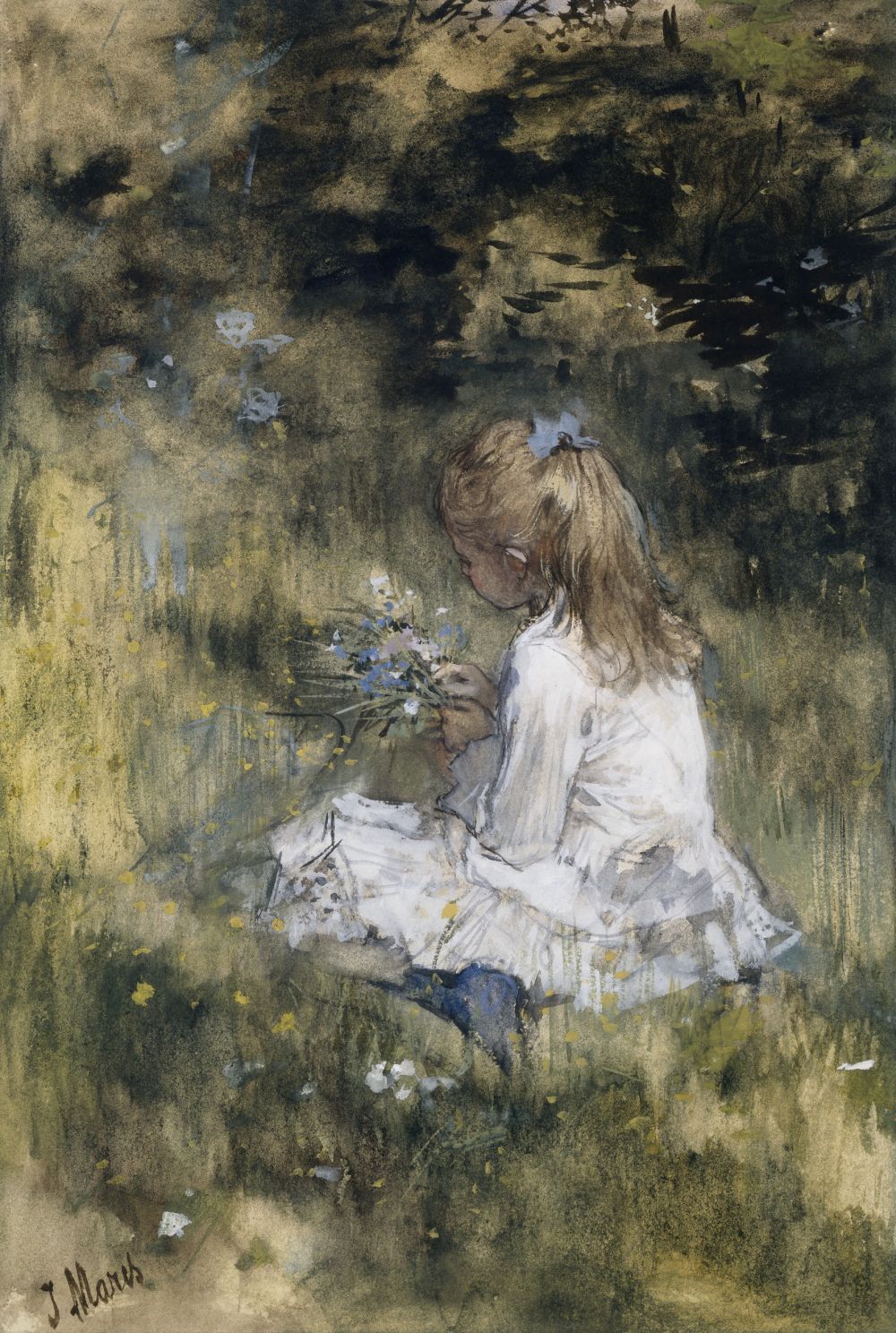
Jacob Maris, Daughter of Jacob Maris with Flowers in the Grass, 1878, watercolour and black chalk
The third and the last watercolour I’ve chosen for this post shows an idyll of a beautiful spring day; Maris’s daughter is sitting in the grass dressed in a pretty white dress and holding a little flower bouquet in her hands. Blue colour of her ribbon is echoed in the details of the bouquet, her little boots, and it’s also present here and there in the lush green grass. This watercolour truly brings the atmosphere of a lovely spring day; warm but not too warm like in the height of summer, mingled scent of many flowers hanging in the air, soft breeze which makes music in the treetops, bees buzzing somewhere in the distance, birds singing in trees. You can imagine stepping through that same grass and seeing the girl yourself, noticing the play of shadows on her dress, feeling the grass as it tickles your ankles, hearing the girl’s soft singing or rambling about her flowers. It’s more sketchy and shows the influence of Impressionism and the plein air technique on Maris, and it’s a very different approach to portraying landscape than he usually did. This painting makes it so easy to fall into a reverie, and it being spring, makes it even easier, and just look at this detail of her dress. I just love how the thin blades of grass and tiny yellow flowers are painted over her dress, and I love the stroke of lighter blue on her shoes. The scene is so airy and delicate and, to me, it brings to mind Debussy’s music.
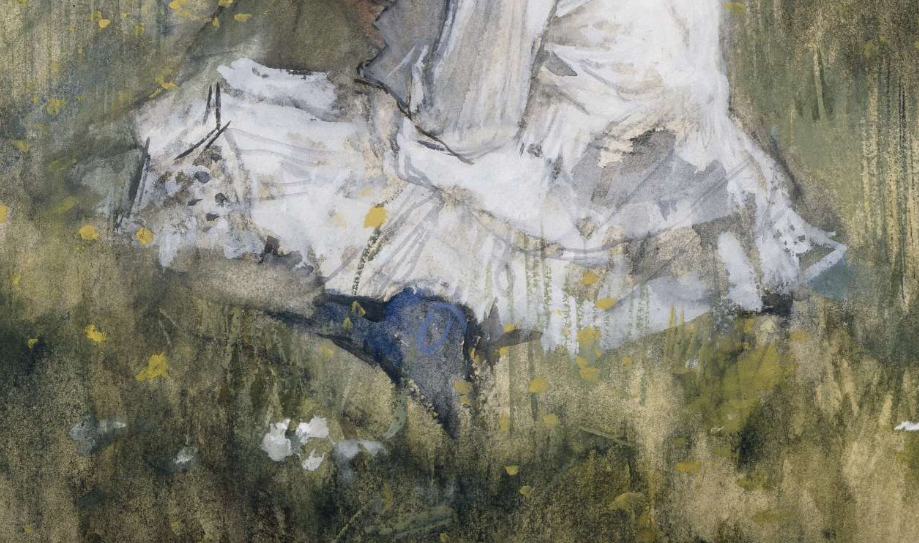
Detail


